Tag: training
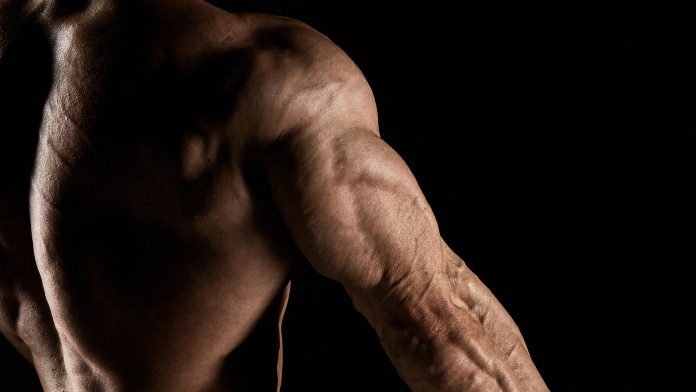
5 Exercises To Build Horseshoe Triceps
5 Exercises To Build Horseshoe Triceps
If your goal is to build sleeve-splitting arms, you can’t overlook your triceps. Most people make the mistake of going too hard on their biceps but skip training their triceps. Your arm development can never be complete without some ripped triceps.
Your triceps have three heads; long, lateral and medial. You need to be training them from all the angles to ensure an overall development. A combination of isolation and compound exercises is the most effective way of building horseshoe triceps.
1. Cable Pushdowns – 3 Sets 15 Reps
Cables are a great way to maintain a constant tension on your target muscle throughout the movement. While using the cables, you have the same amount of tension on your triceps at the top of the movement as you have on the bottom.
Stand at an arm’s length from the pulley machine. Attach a straight bar to the pulley and grab it with an overhand grip with your thumbs over the bar. Keep your elbows pinned to your side and hold and squeeze your triceps at the bottom of the movement.
2. Skull Crushers – 3 Sets 12 Reps
Skull crushers are an incredibly effective exercise when it comes to building ripped triceps. This exercise is also known as head smackers. Skull crushers train the long head of your triceps. The long head is also the hardest part to develop as only a few exercise can target it optimally.
You can use a straight bar or an EZ bar for this exercise. Make sure you have a complete range of motion while performing this exercise. Keep your elbows fixed at a single position, hold and squeeze your triceps at the top of the movement.
3. Smith Machine Close Grip Bench Press – 3 Sets 12 Reps
Smith machine close grip bench press works on the medial and lateral heads of your triceps. Using a Smith machine adds tension to your triceps while performing this exercise. Performing exercises with a complete range of motion are the secret to building horseshoe triceps.
Keep your elbows pinned to your sides throughout the movement. If you don’t have an access to a smith machine in your gym, you can perform the close grip bench press on a flat bench.
4. Cable Overhead Rope Tricep Press – 3 Sets 15 Reps
Ropes can target your triceps from a completely new angle. Overhead presses train the long head of your triceps. Keep your elbows pinned to the side of your head throughout the movement.
Keep the ropes together at the bottom of the movement, spread them out at the top and squeeze your triceps. Make sure you’re not using momentum while performing this exercise. Use moderate weights so you can handle and keep your reps slow and deliberate.
5. Dips – 3 Sets 15 Reps
By this point, your triceps will be completely exhausted. Dips can be a complete triceps buster and are a great exercise if you want shredded triceps. You can perform this exercise on parallel dip bars or on a flat bench.
If bodyweight version of this exercise is too easy for you, you can add extra resistance by using weights. Follow an explosive motion while performing this exercise. Hold and squeeze your triceps at the top of the movement.
Which is your favorite triceps exercise? Let us know in the comments below. Also, be sure to follow Generation Iron on Facebook and Twitter.
*Header image courtesy of Envato Elements.
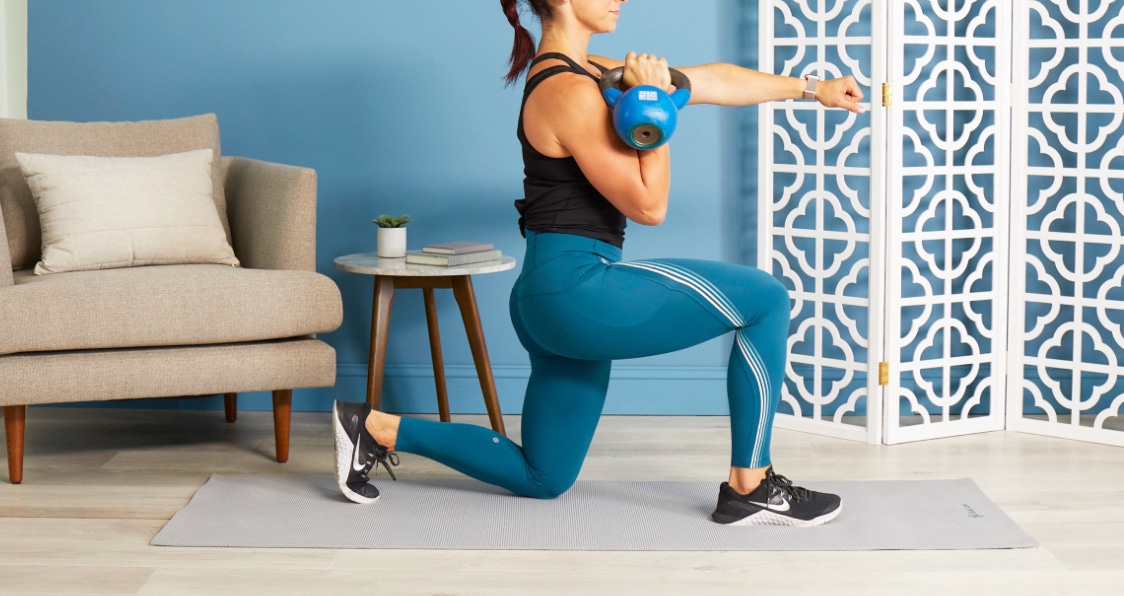
7 Kettlebell Exercises For a Nice Butt
Kettlebell exercises can help build up many areas!
Kettlebells are all the rage these days. Many people consider kettlebell exercises to have better functional value than dumbbells, and for that reason, it is drawing a cult following. Heck, we even have kettlebells that look like chimps, orangutans, Bigfoot, and even Darth Vader.
While kettlebells provide the convenient size and portability of a dumbbell, they have a unique impact on your muscles. The spherical weight of a kettlebell can be anywhere between six to eight inches from your hands, which adds an unparalleled challenge for core stability and stabilizer muscles.
Kettlebell exercises usually involve several muscle groups at once, making them a potent compound lift-focused training tool. The versatile tool that they are, kettlebells can be used for a variety of exercises that improve both your strength and cardiovascular fitness.
Check Out: Best Kettlebells For Durability & Versatility (Updated 2021)
Origin of The Kettlebell
Before we get to the exercises which will transform your rear forever, let us talk about how the weird-looking training equipment came to be.
Kettlebells were developed by Russian strongmen in the 1700s.
Interestingly, in the 18th century, the girya (as the kettlebells are called in Russia) were primarily used to weight crops until some burly Russians started lifting them for building strength and endurance.
Russians and their awkward inventions, right?
The cannonball resembling training equipment began to be used for recreational and competition strength athletics in Russia and Europe in the late 19th century.
Trivia: The English term kettlebell has been in use since the early 20th century.
Kettlebells are usually made of iron or steel and are sometimes covered in colorful vinyl with a comfortable handle grip.
Must Read: The Most Effective Compound Exercises For All Levels of Experience
Benefits of Kettlebell Training
So, you are wondering why bother with the kettlebells and not just use dumbbells instead? Here are the benefits of using kettlebells in your workouts:
1. Helps Develop Explosive Hip Strength and Speed
You cannot go wrong with kettlebells if your goal is to build explosive hip strength. Don’t worry. We won’t ask you what you need the explosive hip strength for in the first place.
Kettlebell swings are one of the most common and effective kettlebell exercises. They are also efficient at training your glutes for strength and speed.
But why is hip strength so important, you ask?
Hip strength can help improve your overall stability and can prevent injuries. Also, hip strength and speed play an important role in many athletic movements, such as jumping, sprinting, and squatting.
Related: Fifteen Essential Lower Body Exercises To Add To Your Training
2. Improves Core Strength and Stability
Most kettlebell movements are a form of ballistic training. Ballistic training improves explosive power by maximizing acceleration and minimizing deceleration. These explosive lifts activate the abdominal muscles and require core contraction and coordinated breathing. This process results in an improvement in core strength.
On top of this, kettlebell exercises are multiplanar, meaning – you will be training your core from all directions. It helps with building overall core strength.
3. Increases Range of Motion
Most kettlebell exercises are compound movements that require you to move through multiple planes of motion. Explosive movements through these planes, over time, results in improved flexibility, mobility, and as a result – a better range of motion.
Related: Full Range Of Motion Vs Partials: Which Is The Way To Go?
4. A Total Body Conditioning Tool
Don’t let the little friendly-looking weight training equipment fool you. They can cause total body annihilating in no time. Maybe there is a reason why some brands make them in the Primal shape.
Kettlebells are great at all the four aspects of fitness – strength, endurance, flexibility, and balance training. No matter how packed your schedule, you can always fit a 20-minute kettlebell routine into your day. The best part? You do not need to hit the gym to complete a kettlebell circuit, you could do it from the comfort of your living room or your garage.
Next Read: At Home Workouts With A Single Kettlebell
5. Facilitates Fat Torching Workouts
Kettlebell training circuits are nothing less than fat-burning fests. According to a study, swinging a kettlebell burns as many as 20 calories per minute. For people too lazy to do the math, that’s 400 calories for a 20-minute workout.
Better yet, kettlebell training often results in EPOC (express post-exercise oxygen consumption). Before you freak out – this is a good thing. It means that you would still be burning calories throughout the day after you are done with your kettlebell workout.
6. Improves Balance
Unlike while training with machines, you need to control your movement path while working with kettlebells. Since kettlebell movements have no predetermined movement paths, it requires your stabilizers to work extra hard, and over time results in their strengthening and improvement in overall body balance.
7. Develops a Stronger Posterior Chain and Improves Posture
Most kettlebell exercises are great for your posterior chain as they target your entire backside. Ballistic exercises like Kettlebell Swings help develop explosive strength in your glutes, hamstrings, lower and middle back, and traps.
Your newfound posterior chain strength will aid in jumping higher, running faster, and kicking harder. Not to mention, strong posterior muscles result in a better posture. Goodbye, slouching.
Must Read: Improve Hip Mobility to Boost Lower Body Power
8. Improves Muscles Imbalances
Since many of the kettlebell exercises involve unilateral movements, they help nail down muscle weakness and imbalances. While performing a kettlebell exercise, you might notice that your right side is weaker than the left on a specific lift.
With this information, you can re-design your training program to fix these discrepancies. If you have been training with barbells and machines for a long time, add kettlebell training to your regimen, and you will notice an improvement in muscle imbalances and symmetry.
Check Out: The Benefits Of Unilateral Training & Why It Matters
9. Enhances Muscle Coordination
Unlike the linear movement pattern of barbells and machines, the dynamic nature of kettlebell training forces you to focus on the movement and have a sharp mind-muscle connection. This leads to improved muscle coordination.
Read: 6 Ways To Improve Your Mind-Muscle Connection
10. Builds Lean Muscle Mass
Although kettlebell training alone does not build crazy muscle mass, it increases the amount of lean muscle tissue. If you are a fan of ripped physiques, kettlebell workouts can help you achieve the conditioning you are after.
Not only does kettlebell training help build lean muscle mass, but it also helps in staying agile, athletic and improves mobility, flexibility, and range of motion. What else could you ask for?
7 Kettlebell Exercises For a Pear Shaped Rear
Contrary to popular opinion, you do not need barbells and dumbbells to build shredded wheels. The cannonball with handles is quite a powerful tool when it comes to building strength, conditioning, and mobility. So, grab a kettlebell and start carving legs that Greek gods would approve.
1. Kettlebell Goblet Squat
[embedded content]
Goblet squat is one of the most versatile kettlebell leg-building exercises. Holding a kettlebell in front of your chest allows you to squat deep while minimizing the risk of an injury. Goblet squat also activates the highest number of muscle fibers in your glutes because you are holding the weight in the front and are hinging and leaning slightly forward.
Steps:
Stand upright with a shoulder-width stance, and your toes pointed slightly outwards.
Hold a heavy dumbbell (as per your strength level) in front of your chest. You could either hold the kettlebell upside down or hold the horns with both your hands.
Pull your elbows in towards your sides and maintain this position throughout the exercise.
While keeping your chest lifted, squat down as deep as you can comfortably.
The kettlebell and your arms should stay inside of your legs and close to your body at all times.
Return to the starting position explosively.
Pause and contract your glutes at the top of the movement.
Repeat for recommended repetitions.
Related: How to Perfect the Goblet Squat
2. Kettlebell Swing
[embedded content]
Kettlebell swings are a popular cannonball exercise. It is an incredibly effective exercise for building hip power and explosiveness. This high-intensity exercise will also help burn off excess body fat.
Steps:
Hold a kettlebell with both hands by the flat, top handle.
Stand with a slightly wider than shoulder-width stance and let the kettlebell hang between your legs.
At the starting position, keep your torso upright and brace your core.
Bend at your knees as you push your glutes back, and lower the kettlebell straight towards the floor.
Keep your arms straight and elbows locked out throughout the movement.
Thrust your hips forward explosively and raise the kettlebell until your arms are parallel to the floor.
Squeeze your glutes, core, and quads at the top of the movement.
Hinge forward at your hips and push your butt back again, letting the bell drop on its own as you do.
Keep a neutral spine throughout the exercise.
Repeat for reps.
3. Bulgarian Split-Squat with Kettlebell (in racked position)
[embedded content]
Kettlebell Bulgarian split-squat will set your glutes and hamstrings on fire. The racked position (in front of your chest) will help strengthen your core and stabilizers.
Steps:
Grab a kettlebell in your right hand and hold it in front of your chest.
Drape your left foot on a flat bench as you firmly plant the right on the floor.
Make sure your right foot is out far enough so that when you lower your hips, your knee stays directly over your ankle.
Bend your right knee and lower your body until your left knee is a few inches off the floor.
Return to the starting position explosively and squeeze the life out of your right hamstring and glute.
Complete the recommended reps on the right side before switching sides.
4. Overhead Kettlebell Lunge
[embedded content]
This is probably the hardest exercise on the list. Overhead lunge forces your glutes and hamstrings to work on full throttle to stabilize the lunge. It also requires good shoulder and traps strength and stability.
Steps:
Grab a kettlebell in one hand and press it overhead. Keep your arm straight and elbow locked out throughout the exercise. Your overhead arm should be perpendicular to the floor for the entire duration of the lift.
Drop into a reverse-lunge by extending the leg opposite to the arm holding the weight.
Bend your rear knee and lower your body until your knee is a few inches off the floor.
Push with your rear foot and return to the starting position explosively.
Complete the recommended reps on one leg before switching sides.
5. Single-Arm Racked Curtsy Lunge
[embedded content]
You probably have seen the curtsy lunges on Instagram. Confused? These are a #FitGirl favorite, and hey, we are not complaining. Curtsy lunges are a god-send for glute development.
Steps:
Stand with your feet shoulder-width apart and your left hand on your left hip.
Hold a kettlebell in your right hand in the racked position at your shoulder. Let the cannonball rest on your shoulder for the duration of the exercise.
Step your left foot diagonally behind you and lower your left knee until it almost touches the floor.
Your right knee should bend to about 90-degrees at the bottom of the movement.
Drive through your right heel to return to the starting position.
Pause and squeeze the life out of your glutes and hams at the top of the movement.
Do all your reps on one leg before switching sides.
6. Single-Leg Kettlebell Deadlift
[embedded content]
Single-leg kettlebell deadlift is an incredibly effective kettlebell exercise for isolating your glutes.
Steps:
Hold a kettlebell in your right hand, and lift your left foot slightly off the ground.
While keeping your back and head neutral, lean forward by hinging at your hips.
Raise your left leg off the floor slowly while keeping it in line with your body.
Lower the kettlebell until it almost touches the floor.
Keep your left shoulder blade pulled down your back.
Slowly return to the starting position, and contract your glutes. Make the most of the move by keeping your rear foot off the floor as you go through the reps.
Repeat for recommended repetitions before switching sides.
7. Kettlebell Squat and Clean
[embedded content]
There is some learning curve to this exercise. Make sure you are not going too easy on yourself by using lighters kettlebells. Use a weight that puts a strain on your glutes from the first rep.
Steps:
Stand with an upright torso and your feet placed shoulder-width apart.
Bend at your knees and push your hips back to lower yourself and grab a kettlebell with both hands by the top of the handle.
Drive through your heels to stand up as you pull the weight up to your chest.
During the upward movement, quickly swap your hands from the handles to the cannonball.
Lower into a squat, shifting your weight into your heels and pushing your hips back as you bend your knees.
Drive your body up explosively and squeeze your glutes at the top of the movement.
Reverse the movement by switching your hands back to the kettlebell handle and lowering the weight back down to the floor, bending your knees and pushing your hips back to keep your spine straight.
Repeat for recommended repetitions.
Conclusion
You could perform all these exercises in a single leg workout or use some of them in separate routines to make the most of your glute training. After you see the results, kettlebells will become an indispensable part of your leg training regimen.
Which is your favorite kettlebell exercise? Let us know in the comments below. Also, be sure to follow Generation Iron on Facebook, Twitter, and Instagram.
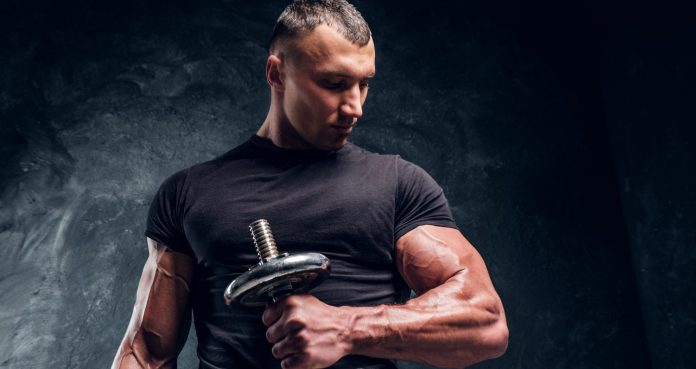
Best Workout Plan Approach After Returning From A Long Layoff
The best workout plan approach after taking some serious time off.
So, it’s been a while since you have worked out. Things got busy. We get it. But now it’s time to hop back on that plan and see those gains you want most. But where to start. Taking time off has unfortunately limited how much you can lift, how fast you can run, and how much power you can actually generate, but fear not, for the right workout plan approach can get you back on track in no time.
Knowing what to do and how best to tackle this problem is important for jumping into it the wrong way can lead to injury and keep you out of the gym for much longer than need be. But there is no point in beating yourself up. You have come to the right place and we’ll put out an idea that will help get you back in the gym, working hard, and seeing those gains return in no time.
Let’s jump into a workout plan approach for those returning from a long layoff. Knowing what to do, and what not to do, will be important as you look to get those gains going again.
What To Prepare For
Unfortunately, your strength and cardio will have decreased slightly so be prepared to not lift as much or have the same endurance. But in due time that will return. Soreness and those stiff mornings are bound to happen as well but using a foam roller, stretching techniques, and the right supplements will help get you back on track easily.
How To Structure Your Workout Plan & What To Expect
At First…
Start light and reacquaint yourself with those movements. Some big lifts like the squat and deadlift will come back easily and with lighter weight you can focus on form and rebuild that lost mind-muscle connection (1). Definitely put an emphasis on stretching and loosening up the joints that need it most like your hips and shoulders. Tools like foam rollers and massage guns can work wonders for you here.
When it comes to cardio, start light and build up that base again. The treadmill, elliptical, and bike are good ways to do this. Throw in some incline walking as well.
As Things Start Getting Going…
Slowly increase the weight as well as increasing your intensity. Your body will start getting back to where you stopped and you will start to tackle those exercises more and more. While you won’t be at PR shape, you are getting closer. Heavier loads with lighter reps will work well, and you can start pushing yourself to failure (2).
Ramping Up…
You can start going even heavier and can add some isolation exercises in there to focus on those spots you want to. Here is where sleep and hydration are key as you are pushing your body even more with intensity. For those cardio based workouts, HIIT workouts can be great to get your heart rate going, start to burn more calories, and increase strength at the same time (3).
Once You Feel Ready…
You should be back to normal training. Hitting those same reps as before and feeling good about your progress will start to return and you may even try some one or two rep maxes. Be sure to put an emphasis on nutrition and make sure you are using those supplements wisely. Your body is now going through the ringer and keeping it fueled for every workout will work wonders for you.
What Not To Do
Don’t start lifting heavy right away. This will only lead to unnecessary soreness and even injury. This applies to both lifting and cardio, for you need to get your body back to where it was before your layoff. Getting your body acclimated to those heavy loads and intense cardio takes times so be patient
Don’t neglect a good pre- and post-workout stretching routine. To start, focusing on flexibility and mobility work will better prepare you as those lifts start getting even heavier. Don’t build up strength again only to be limited by tight hips or other joints (4). To alleviate pain as well, looking into knee sleeves, elbow sleeves, or wrist wraps can help take some load off, allow you to lift a little more weight, and focus on form to rebuild that strength you want most.
Best Supplements When Returning From A Layoff
A solid supplementation routine is in order for those returning from a long layoff, as this will kickstart your gains and keep you grinding for much longer by putting an emphasis on health and wellness. To start, a protein powder is a must have on your shelf as this will work to increase muscle growth, enhance recovery, and allow you to better manage your weight, and even lose some. If you need a great a protein powder, look no further than Enhanced Whey Protein Isolate for those clean gains.
On top of those supplements to build muscle and aid in all things growth, those products to assist with health and wellness needs should be a must have as well. Fish oil can provide you with powerful omega-3 fatty acids that provide for a host of benefits to bodily functions. Enhanced Omega-3 Fish Oil is a great product, as well as their Health 3-In-1 to boost immunity, and aid in your digestive health.
Wrap Up
Getting back in the gym can be hard after a long layoff, but the right approach with your workout plan will make your return seem easy. While at first it may be a bit discouraging, that comes with the territory, and you will slowly start to rebuild that strength you want to see most. Having the best supplements to tag team alongside a great workout will work wonders for you and soon enough, you’ll be back on track and seeing those gains you want most again.
Let us know what you think in the comments below. Also, be sure to follow Generation Iron on Facebook, Twitter, and Instagram.
*Images courtesy of Envato
References
Calatayud, J.; et al. (2016). “Importance of mind-muscle connection during progressive resistance training”. (source)
Mangine, G.; et al. (2015). “The effect of training volume and intensity on improvements in muscular strength and size in resistance-trained men”. (source)
P.; et al. (2002). “The scientific basis for high-intensity interval training: optimizing training programmes and maximizing performance in highly trained endurance athletes”. (source)
Haley, J. “The Importance of Flexibility and Mobility”. (source)
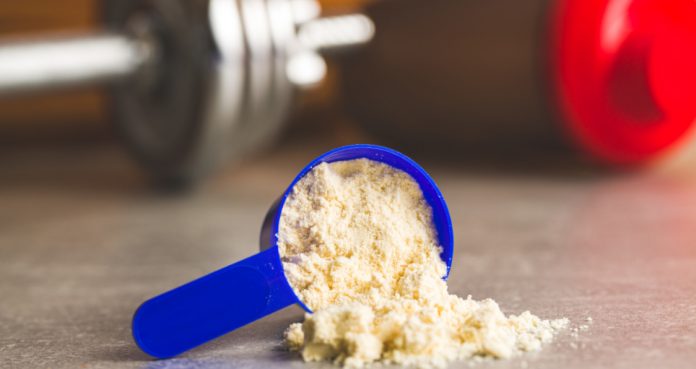
How To Tell If Your Protein Powder Is Fake
How To Tell If You’re Getting Phony Protein Powder
Most things with good sales records are vulnerable to be sold on the black market. Our beloved protein supplements are no different. There have been numerous instances where duplicate protein powders were being sold in through underground channels.
You’re more prone to fake supplements if you live in developing countries where most of the supplements are imported from countries like USA and Canada. Consuming fake supplements for prolonged periods can have a negative impact on your body.
There is a probability you’ve been using fake supplements for a long time without knowing it. If you’ve just started using protein powders, chances are you won’t know what they should be like. This is the complete guide to know if your protein powder is fake.
1. Solubility
Fake supplements aren’t there to improve your muscle mass, they focus on making the smugglers rich. These smugglers use the cheapest materials to make the protein supplements which leads to hard insoluble powders.
If you’ve ever used a genuine protein supplement, you would know how easy it is to dissolve in water. Fake protein supplements are the opposite of this. You won’t be able to mix fake protein powder in water with a spoon. You will need a blender bottle and some hard shakes of the wrist to dissolve the powder in the water.
2. Texture
If you’ve ever seen a protein supplement before this point, you know the powder has a constant texture. This might not be the case with fake supplements. You can expect to find irregularities in the powder.
These irregularities can be anything from vitamin powders to crushed chalk. It is recommended you buy supplements which have a unique flavor. Flavors like chocolate and vanilla are the most common to be tampered with.
3. Taste
When you tamper with the ingredients of a supplement, it will surely affect its taste. The best way to check if a protein is fake or not is to check its taste. If you know someone who is using the same protein powder, exchange one serving with them.
This taste test will be enough to reveal if you have the real thing. Fake protein supplements are also known to have a pungent smell and leave a bad aftertaste in your mouth. Also, check if your supplement has the same taste throughout. If the taste is changing after every serving, you have a fake supplement.
4. Side Effects
Since fake supplements have cheaper ingredients or substitute elements, they can have a negative effect on your body. If you see any ill effects on your body after switching to a new supplement, it’s a sign of a fake protein powder.
The most common side effects of fake supplements are the formation of acne and marks on your back and arms, and hair fall. Stop using the supplements when any of these signs start appearing.
5. Packaging
The product packaging of these fake supplements can be the biggest giveaway. Smugglers might use a substandard quality of jars or labels to save cost. If you have seen the original packaging, you would be able to tell the difference without a problem.
There are some cases where these crooks use the disposed and intact boxes of supplement to repackage their fake supplements. It can be hard in such situations to tell the difference between the real and the fake. It is always advised to crush your containers after you’re done using them to prevent piracy.
Have you ever used a fake supplement? Let us know in the comments below. Also, be sure to follow Generation Iron on Facebook and Twitter.
*Header image courtesy of Envato Elements.
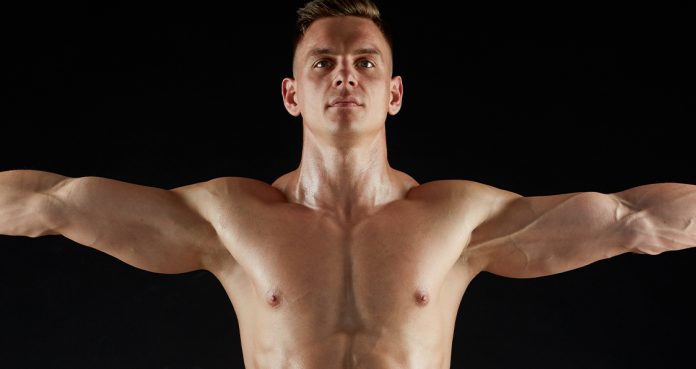
How to Turn Your Toothpick Neck into a Wood Log
Build a Thick Neck With These Exercises
Many people will be curious after reading the title as only a few people in gyms around the world train their necks while the others have a pencil neck. It might come as a shock to them that you could develop the muscles in your neck.
Just like other muscles in your body, the muscles in your neck can be developed through training. Although you’ll need to be careful while training your neck as a small mistake can lead to an injury.
Neck Rotations
Many people these days have a desk job which makes them lean onto a laptop for the majority of the day. The awkward position while working on a laptop can cause problems like cervical pain and headaches.
Spending five minutes on rotating your neck in the morning can get you incredible results and fix the neck pain happening due to working on a computer. Neck rotations are also the easiest exercise on the list.
[embedded content]
Neck Bridges
We get into the serious business of developing a thick neck with the neck bridges. The neck bridges are commonly performed by boxers, MMA athletes and wrestlers in their training. These athletes take a lot of hits on their heads and having a strong neck keeps them from being knocked out.
The beck bridges are hard to perform and when you’re starting out, they should be done under the supervision of someone who knows how to do them correctly. While performing the bridges, hold the position where you feel a tension in the neck until the tension starts to fade away.
If the bodyweight version of the bridges feels easy, you can add resistance by placing a weight plate on your chest. Start with performing the orthodox bridges and once you get better, do the neck rotations as you get into the ‘bridge’ position.
Neck Curls
[embedded content]
Neck curls are fairly easy to perform, but you need to make sure your ego doesn’t get in the way. For the neck curls, place your chest on an incline bench, so your body is aligned from the top of your neck to your toes.
Use a head harnesses or simply hold a weight plate at the back of your head. Slowly lower your head and then raise it so your chest is lifted an inch off the bench. Hold the rep at the top and the bottom of the movement.
You can also perform this exercise on the cable pulley machines or with resistance bands. Both of these variations will add constant tension on your neck throughout the range of motion.
Shrugs
The trapezius muscle forms a big part of the neck and training the traps can help with the neck development. For the shrugs to help get rid of the pencil neck, make sure you maintain a full range of motion.
While performing the shrugs, try to touch your ears with your shoulders and hold the rep at the top of the movement. Perform three sets of 15-20 reps on each exercise. You can adopt the same approach to training the neck as the calves.
Do you train your neck? Let us know in the comments below. Also, be sure to follow Generation Iron on Facebook and Twitter.
*Header image courtesy of Envato Elements.
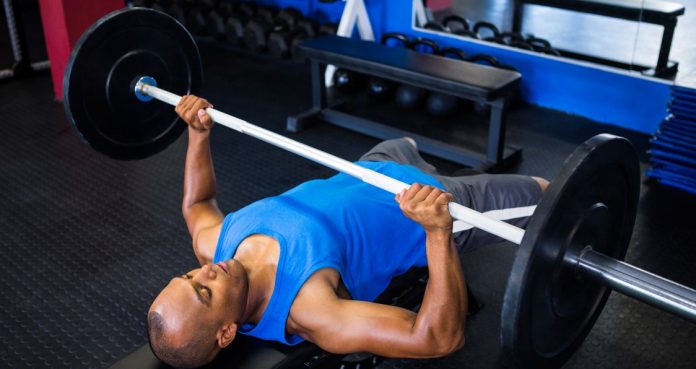
It’s Time You Ditch The Barbell Bench Press
Reasons to Give Up Bench Pressing
Barbell bench press is one of the most popular exercises. “How much do you bench?” is casually thrown around in gyms around the world. The bench press has been the symbol of strength for a long time.
The barbell bench press is a compound movement which incorporates multiple muscle groups. If you’re not careful while performing the bench press, it can cause more harm than good. Now is the best time to look for alternative chest exercises.
1. Plateau
When a person starts working out, the bench press is one of the first exercises he learns. Most people are too loyal to this exercise and always have a variation of it in their workouts. Performing the same exercises in every workout can cause you to hit a plateau.
If you’ve been benching for a long time but don’t see any progress in your pecs, you might have hit a plateau. If this is the case, you need to switch up your training and perform new exercises to shock your muscles and break the plateau.
2. Building Muscle
The bench press is a functional movement and is arguably not the best chest building exercise. Squats, deadlifts and bench press are a staple in a powerlifter’s training routine. People training to build muscle mass can do better by avoiding the bench press.
Powerlifters, strongmen, and weightlifters perform the bench press to build strength so they could perform explosive movements. On the other hand, bodybuilders need exercises which recruit and train the pectoral muscles to build size.
3. Injuries
A majority of injuries caused inside the gyms could be credited to the bench press. Pec tear is the most common injury caused due to bench pressing. If you have chest, shoulder or back injuries, you should stay away from this exercise.
If you have any of the injuries mentioned above, instead of giving up training your pecs you should work around your injuries by performing other exercises. Using training equipment like slingshots, elbow sleeves, etc. can be an aid in working out while you’re injured.
4. Targeting the Pectoral Muscles
You have a strict range of motion while performing the bench press which can limit the muscle fiber recruitment in your chest. Exercises using the dumbbells, machines or cables can help you target your pecs more efficiently.
Some people have a hard time performing the bench press and establishing a mind-muscle connection. These people end up recruiting their triceps and other supporting muscles. Exercises using the dumbbells and cables can help you in targetting your chest from different angles.
5. Training to Failure
Training to failure on the bench press can be a dangerous thing. The internet is full of videos of people dropping the barbell on their chests and necks. You certainly don’t want to find yourself in this situation.
If you’re going for a PR on the bench press, it is suggested you ask someone for a spot. On the other hand, going for failure while training with dumbbells, cables or machines is relatively less risky.
How often do you bench press? Let us know in the comments below. Also, be sure to follow Generation Iron on Facebook and Twitter.
*Header image courtesy of Envato Elements.
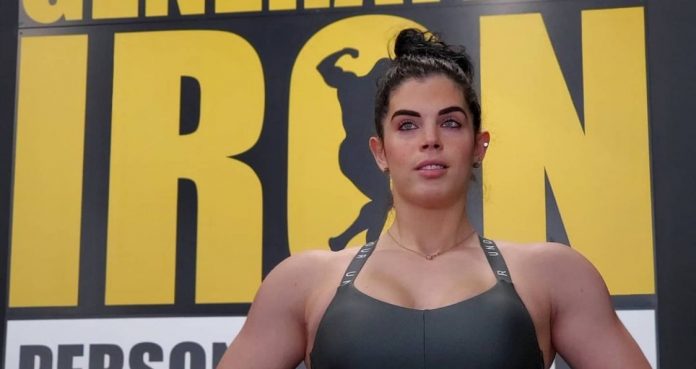
Shoulders With Sephora: Gains At Generation Iron Personal Training
Work your shoulders with Sephora as she grinds in the state-of-the-art Generation Iron gym.
Finding the right location to workout can be a daunting task, but Generation Iron Personal Training makes that easy. A fantastic gym with state-of-the-art equipment and knowledgeable trainers, your gains will become a reality in no time. Plus, with the ease and convenience of setting up a time to work out, Generation Iron Personal Training will make you actually want to get up and get moving.
We followed around Sephora, one of Generation Iron’s Personal Training trainers, as she walked us through a great shoulder workout. Neglecting to work out your shoulders can sacrifice strength, size, and that well-rounded physique you want most. With Sephora’s guidance, this shoulder workout is sure to give you the best gains around.
Let’s jump into this shoulder workout from Sephora so we see those gains we want most. With the right approach, we can better tackle any workout put in front of us. A great shoulder workout can be hard to come by but thankfully Sephora offers up this 5-exercise workout for ease, convenience, and gains.
About Sephora
Sephora found herself in a position many of us do, being tired of excuses and a lifestyle we want to change. Through hard work and dedication, Sephora has committed herself to building her body and shaping the necessary areas to see results she has great confidence in. She received her NASM certification and is on a mission to not only help change your body, but also your mindset on health and fitness.
Sephora’s Shoulder Workout
This shoulder workout from Sephora is a great way to build shoulder strength and size, while also aiding in stability and an overall well-rounded physique. A mix of machine and free weights exercises, you target each muscle of your shoulder differently to not neglect or miss out on any gains.
Exercises
Sets
Reps
Machine Shoulder Press
4
12
DB Lateral Raise
4
12
DB Front Raise
4
12
Alternating One Arm Arnold Press
4
12
Cable Upright Row
4
12
Exercise Breakdown
Machine Shoulder Press
The machine shoulder press is a great exercise for hypertrophy as it will offer healthy stress and nice resistance on your shoulders. Using the machine allows you to add more weight than a free weight shoulder press as well as work to improve form and learn to feel out this exercise. While the machine provides safety, it is important to focus on your technique to not build bad habits.
DB Lateral Raise
The dumbbell lateral raise is a nice shoulder exercise to strengthen those stabilizer muscles and improve shoulder stability. Building strength is obvious but working to tackle those muscle imbalances is also a great benefit to this exercise. It also has plenty of room for variations.
DB Front Raise
Dumbbell front raises are great for building sport specific strength but also functional movements. Another great way to improve any muscle imbalances, the options for you to succeed in terms of building a well-rounded physique are nowhere near impossible. Plenty of variations exist for this exercise as well.
Alternating One Arm Arnold Press
This exercise will build serious strength and size as a result of the complexity with the press and twist aspects. Alternating arms allows you to focus on form even more and stay dialed in as this exercise can be a killer. It can be taxing on your shoulders so working with the appropriate amount of weight will ensure less chance of injury.
Cable Upright Row
Cable upright rows are effective for building bigger traps and ensuring more width in your shoulders. A nice isolation exercise, there are plenty of variations to try but the benefit of the cable machine is more weight can be added, ensuring better form and increased mind-muscle connection.
Benefits Of Strong Shoulders
Having strong shoulders should not be overstated. The benefit to stronger, more stable shoulders can not only enhance sport specific movements, but also those more functional ones. Increasing strength, boosting stability, and adding to a well-rounded physique can be a game changer as you seek the best for your shredded aesthetic. This workout from Sephora will truly enhance your shoulder development with just 5 simple exercises. And with a great gym like Generation Iron Personal Training, you just can’t go wrong.
About Generation Iron Personal Training
This state-of-the-art training facility is 7,000 square feet, jam packed with elite equipment and uniquely designed to provide for a great workout and awesome atmosphere to motivate yourself to see massive gains. Everything you know about gym memberships and their shady hidden fees with additional costs are a thing of the past as you can book directly with registered trainers for one-on-one personal sessions. With the motto “Sweat Today, Shine Tomorrow”, you will become a new person, one with the confidence and physique to be proud of.
With plenty of room to work out and have your own space to get after it, Generation Iron Personal Training gym can be just what you need to succeed. Plus, parking is easy and convenient for a nice bonus.
Location & Address: 730 NY-304 in New City, New York
Phone Number: 845-664-8589
Email: [email protected]
Social Media: Follow us on Instagram for the best content and important updates to always be in the loop on Generation Iron Personal Training.
Check out the website for Generation Iron Personal Training here!
Wrap Up
This shoulder workout from Sephora at Generation Iron’s Personal Training gym is a great workout to boost strength and size, while also building stability and a well-rounded physique. The right approach under the guidance of a knowledgeable trainer can make or break your gains and give you the best for your desired goals. Generation Iron Personal Training is a fantastic way to see your goals become reality so don’t hesitate to reach out and see how this is a great fit for you.
Let us know what you think in the comments below. Also, be sure to follow Generation Iron on Facebook, Twitter, and Instagram.
*Images courtesy of Sephora Instagram and Generation Iron
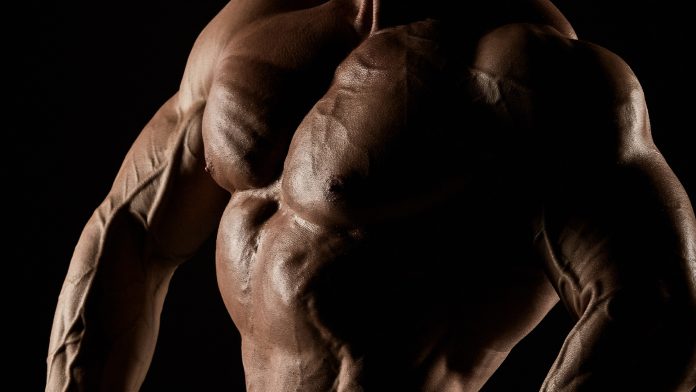
How To Build A Chest Like Jay Cutler
These Are Jay Cutler’s Favorite Chest Building Exercises.
A chiseled chest has been the symbol of machoism for a long time. Jay Cutler, the 4X Mr. Olympia, is the poster boy for a broad chest and a narrow waist. There are no doubts Jay’s chest was a big factor in getting him the title of the best bodybuilder in the world.
Jay Cutler’s chest training program is different from what you might expect when you look at him. He follows a conservative approach when it comes to working out. He relies heavily on machines for his training. This mass monster believes eliminating the use of barbells reduces the chances of injury in the gym.
1. Hammer Strength Chest Press – 3 Sets 10 Reps
Jay stays away from lifting heavy barbells. This is a smart move especially if you’re prepping for a contest. An injury is the last thing you want while training to get on stage. Leverage chest press is a great substitute for the flat bench press.
Since this is a controlled isolation movement, feel free to use heavy weights. Cutler is big on establishing a mind-muscle connection. At the top of the movement, squeeze the living hell out of your pecs.
2. Incline Dumbbell Bench Press – 3 Sets 10 Reps
The upper chest is a weak muscle group for most people. If you’re one of these people, you can make it even worse by not training it often. Incline dumbbell bench press is incredibly effective at targeting your upper pectoral muscles. Follow a complete range of motion and contract your chest with every rep.
Jay doesn’t follow the conventional 12, 10, 8 reps scheme in his workouts. He does consistent 10 reps in all his sets. Although you will be doing the same number of sets in each set, don’t hold back from pushing yourself and increasing the weights.
3. Pullovers – 3 Sets 10 Reps
Most people do pullovers for their back, but Jay does it for his upper pecs. You don’t have to use heavy weights during this exercise. Use moderate weights you can control and perform slow and deliberate reps with. Don’t lock out your elbows during this exercise.
Locking your elbows will engage your back and take all the tension off of your pecs. Lying cross-bodied on the bench during this exercise is more effective than lying straight. In the cross-bodied position, your hips and back are hanging low while your chest is elevated. Doing this helps with a better pec recruitment.
4. Cable Crossovers – 3 Sets 10 Reps
If you want to build a chest like Jay Cutler your chest workouts should be a mix of isolation and compound exercise. Compound exercises help with building the size and strength while isolation exercises help with building muscle definition.
Cable crossovers help with building the striations in your middle chest. Holding and squeezing at the top of the movement will help you get the chest separation and definition. Stand with your chest out and back arched while performing this exercise.
5. Dips – 3 Sets 10 Reps
Dips can prove to be a brutal exercise after what you’ve already put your chest through. This exercise is great for building your lower pecs and improving the definition in your chest. Maintain a full range of motion while performing dips.
If the bodyweight version of this exercise is too easy for you, feel free to use weights. Don’t just go through the motions while performing dips. Hold and squeeze your pecs at the top of the movement.
According to you which athlete has the best chest? Let us know in the comments below. Also, be sure to follow Generation Iron on Facebook and Twitter.
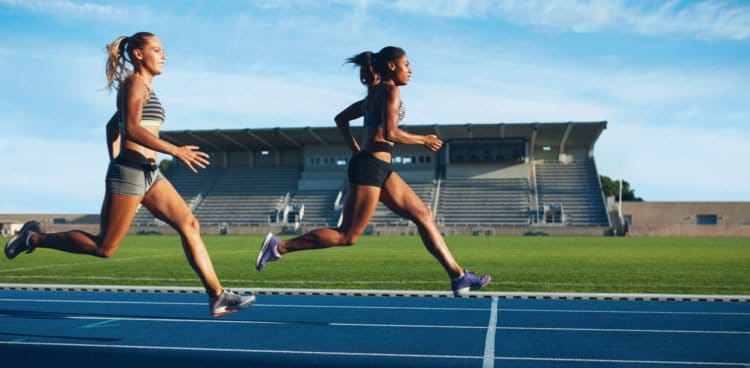
Should You Train Fast v Slow: Fast Twitch vs. Slow Twitch Breakdown
Here is a breakdown on if you should train fast or slow.
So the skeletal muscles are comprised of three types of fibres, there is type I, also known as slow-twitch and type II also referred to as fast twitch, and there are types of type II (which I will explain below).
Slow Twitch (Type I)
Slow twitch fibres are geared to supporting aerobic training and prolonged exercise, so exercises such as long distance running, swimming, cycling and other forms of endurance training.
The Slow Twitch fiber contracts much slower and is more resistant to fatigue and has a quicker recovery time.
Contraction type: slow
Speed: 100 milliseconds
Fast Twitch (Type II)
There are actually two types of fast twitch fibres, there is Type IIA and Type IIX (also referred to as Type IIB).
Type IIA
Essentially this is an intermediate muscle fiber and a hybrid of the two others,as it is a mix of Type I and Type IIX(IIB), so it is great for aerobic and anaerobic training such as weight training, powerlifting, plyometric movements and agility training.
This fiber contracts moderately and doesn’t become fatigued as quickly or take as long to recover.
Contraction type: fast
Speed: 50 milliseconds
Type IIX /IIB
Fast twitch fibres are geared to supporting anaerobic training and produce more power and force focused movements such as weight training, sprinting, and agility training.
Type IIx is also the purest form of fast twitch fiber, the quick contractions also means that it gets fatigued much quicker and has a longer recovery time.
Contraction type: very fast
Speed: 25 milliseconds
So now we know what muscle fibres are available to us, should this affect how you should train? Should different muscle groups be trained differently?
squats, medicine ball
How to train Type I
The best and most effective way to train Type I is typical endurance training, and when in the gym this would be higher reps with lighter weights.
How to train Type II
Type II is definitely the fiber you want to hit if you want to increase strength, and the best way to do that is heavier weights and less reps.
But things are really not that cut and dry, as all of your muscles are comprised of both fast and slow twitch muscle fibers.
So let’s break it down.
What percentage of fast twitch and slow twitch are present in different muscle groups, the table below with provide more details:
Muscle Group
Fiber Type
Rep Range
Chest
Approx 60% fast twitch fibers
Low to medium rep range
Triceps
Approx 67% fast twitch fibers
Low rep range and go heavy
Shoulders
Approx 60% slow twitch dominant
Medium to high rep range
Quads
Vastus Lateralis muscle is about 69% fast-twitch and 32% slow-twitch fibers.
Low rep range and go heavy
Biceps
60% fast-twitch and 40% slow-twitch
Low rep range and heavier weights
Abdominals
55-58% slow-twitch, and 42-45% fast twitch.
MIx it up, vary between light weight and high reps to heavy with low rep range
Calf (gastrocnemius)
The Gastrocnemius (calf) muscle is about 50% fast-twitch fibers and about 50% slow-twitch fibers.
MIx it up, vary between light weight and high reps to heavy with low rep range
Calf (Soleus)
80% slow twitch
Medium to high rep range
Back
54-58% slow twitch
Low to medium rep range
Deltoid
Over 50% slow twitch
MIx it up, vary between light weight and high reps to heavy with low rep range
One study concluded that ‘the percentage of type I fibres was higher than 50 in the deltoid and gastrocnemius, lower than 50 in the rectus femoris and about 50 in the biceps brachii.’, so these numbers are a guide and not concrete by any means, this can change per individual.
In conclusion, these figures are great to have but essentially muscle fibers can be trained to switch as one study concluded that a ‘shift from type II to type I fibers may occur under longer duration, higher volume endurance type events.’
And age also plays a part in switching muscle fibers as the percentage of fast twitch muscle fibers in your body starts to decrease after age 30.
The key point here is that when training, ensure you keep a wide variety of rep ranges, and vary your weights from light to heavy, rather than specifically targeting only fast or slow twitch fibers.
So until next time, keep pumping!
Sources
https://academic.oup.com/ptj/article/81/11/1810/2857618
https://www.hindawi.com/journals/bmri/2016/5946520/
https://www.ncbi.nlm.nih.gov/pmc/articles/PMC521732/
https://pubmed.ncbi.nlm.nih.gov/4109253/
https://www.jns-journal.com/article/0022-510X(71)90215-2/fulltext
https://link.springer.com/article/10.1007/BF01042285
https://pubmed.ncbi.nlm.nih.gov/16795030/
https://pubmed.ncbi.nlm.nih.gov/23558383/
https://europepmc.org/article/med/870781
https://pubmed.ncbi.nlm.nih.gov/12811774/
https://pubmed.ncbi.nlm.nih.gov/161688/
https://pubmed.ncbi.nlm.nih.gov/123895/
https://pubmed.ncbi.nlm.nih.gov/2960128/
https://pubmed.ncbi.nlm.nih.gov/9617724/
https://pubmed.ncbi.nlm.nih.gov/21912291/
https://pubmed.ncbi.nlm.nih.gov/21912291/

The 1000-Rep Total Annihilation Bicep Workout
The Most Brutal 1,000 Rep Arm Workout.
Most people get a gym membership to build bigger biceps, but only a few of them end up achieving this goal. Building bigger biceps requires you to train them with insane intensity so that they have no idea what hit them.
In this article, we’ll be sharing a workout that you probably have never imagined doing before. By the end of the workout, you’ll have no idea what to do with your arms so that they stop hurting.
Barbell Bicep Curls – 10 Sets 20 Reps ~ 200 Reps
Since this is a 1,000 rep training session, you should be doing the compound lifts early in the workout. Doing the compound exercises when the fatigue starts to kick in can take a toll on your form.
The barbell bicep curls are the first lift in the workout and you should try to lift as heavy as you can in the exercise without compromising on the form. Don’t forget to pause and contract your guns at the top of the movement.
Cable Curls – 2 Set 100 Reps ~ 400 Reps
While following the workout, you should make sure you’re not resting for more than 60-seconds between sets. You should be able to complete the training session within an hour. Resting for too long will negatively impact training intensity.
In a high-rep high-intensity workout like this, the ego can be your worst enemy. Choose a weight you’ll struggle to complete the 100 reps with, but make sure you’ll not have to use momentum.
Dumbbell Hammer Curls – 5 Sets 20 Reps ~ 500 Reps
While performing the dumbbell hammer curls, you’ll be lifting the dumbbells at the same time. Your elbows will be pinned to your sides and your arms will be extended straight in the starting position.
Lift the dumbbells until they reach your shoulder height. Pause and contract your bis at the top of the movement before lowering the weights. Repeat for the recommended reps while keeping your lower arms parallel to each other throughout the lift.
Machine Preacher Curls – 4 Sets 50 Reps ~ 700 Reps
The machine preacher curls train the peak of your mountains. Most people make the mistake of shortening their range of motion while performing the lift. Follow a full ROM to ensure you’re not leaving any gains on the table.
Reverse Grip Barbell Curls – 5 Sets 20 Reps ~ 800 Reps
Many people neglect training the outer head of the biceps and their forearms. Performing the reverse grip barbell curls is an incredibly effective way of improving these muscles which also happens to be common lagging muscle groups.
Dumbbell Concentration Curls – 2 Sets 50 Reps ~ 900 Reps
The dumbbell concentration curls were brought into the limelight by the Governator. Arnie can be seen performing the exercise multiple times in the legendary documentary, Pumping Iron.
Drag Curls – 1 Set 100 Reps ~ 1000 Reps
Drag curls are one of the most underutilized exercises in the gym. In the exercise, you hold a smith machine barbell with a shoulder-wide grip. Curl the barbell by pulling your elbows up and back. The drag curls can make your pythons more venomous.
How many reps do you do in your last workout? Let us know in the comments below. Also, be sure to follow Generation Iron on Facebook and Twitter.
